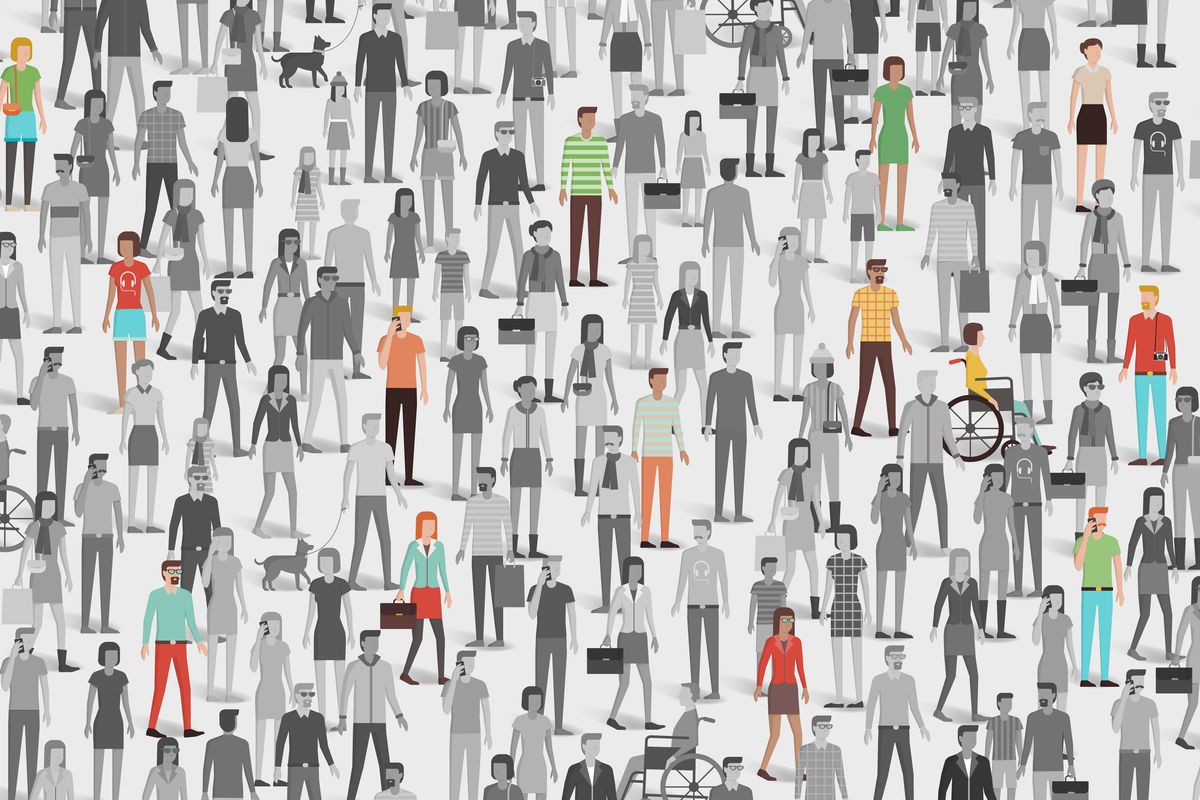Inclusive Sports: Building Spiritual Connection and Environmental Awareness
The evolution of inclusive sports
Sports have traditionally been design for individuals with typical abilities, but a significant shift has occurred in recent decades. Inclusive sports programming has emerged as a powerful movement that ensure everyone, disregarding of physical or cognitive abilities, can participate in athletic activities. This evolution represents more than upright physical accommodation — it embodies a broader understanding of human potential and connection.
Adaptive sports modify traditional activities through three primary mechanisms: rule adjustments, specialized equipment, and environmental modifications. These adaptations don’t diminish the competitive spirit or benefits of sports; kinda, they enhance accessibility while maintain the core elements that make athletic participation valuable.
Adapt rules for inclusive participation
Rule modifications represent the virtually straightforward approach to create inclusive sports environments. Examples include:
- Wheelchair basketball allow players two pushes before dribble
- Seated volleyball permit a portion of the player’s body to remain in contact with the court
- Goal ball use sound emit balls and require silence from spectators, so players with visual impairments can track the ball
- Extended time allowances in swimming competitions
- Modify scoring systems that accommodate different ability levels
These rule adaptations preserve the strategic elements and excitement of competition while ensure fair participation for individuals with different abilities. The beauty of these modifications lie in their simplicity — they oftentimes require minimal investment while maximize inclusion.
Specialized equipment breaking barriers
Adaptive equipment has revolutionized sports participation for individuals with special needs. Technological innovations havecreatede tools that bridge the gap between physical limitations and athletic performance:
- Lightweight, maneuverable sports wheelchairs design specifically for basketball, tennis, and race
- Prosthetic limbs engineer for specific sports movements
- Sit skis that allow individuals with lower body mobility issues to experience downward sloping ski
- Tandem bicycle for those with visual impairments to ride with sighted partners
- Modify grips and handles for various sporting equipment
These equipment innovations continue to evolve, become more sophisticated, lighter, and more responsive to user needs. What’s especially noteworthy is how these adaptive technologies oftentimes influence mainstream sports equipment design, create a positive feedback loop of innovation that benefit all athletes.
Environmental modifications for access
The physical environment where sports take place can present significant barriers. Thoughtful modifications include:
- Ramped access to pools, courts, and fields
- Textured boundary lines for athletes with visual impairments
- Acoustic modifications in gymnasiums to assist participants with hear impairments
- Wider lanes in swimming pools and tracks
- Adjustable height equipment like basketball hoops and volleyball nets
These environmental adaptations oftentimes benefit all participants, demonstrate how inclusive design create better experiences for everyone involve in sports activities.
The spiritual dimension of team sports
Beyond physical benefits, team sports offer profound spiritual growth opportunities. The concept of spirituality in this context extend beyond religious practice to encompass meaning, purpose, connection, and transcendence — elements that team sports course cultivate.
Find purpose through collective goals
Team sports create a framework where individual efforts contribute to collective achievement. This structure mirror many spiritual traditions that emphasize find purpose through service to something greater than oneself.
When athletes commit to team goals, they experience the satisfaction of subordinate personal glory for group success. This sacrifice parallel spiritual concepts of selflessness and cultivate a deeper sense of meaning. Athletes frequently describe this experience as transformative — move beyond individual concerns to embrace collective purpose.
For individuals with special needs, this experience can be peculiarly powerful. Being value as an essential team member counteracts societal messages that sometimes diminish their contributions. The spiritual growth that come from being need and value can not be overstated.
Building community and connection
Many spiritual traditions emphasize the importance of community. Team sports create natural communities bind by share experiences, challenges, and triumphs. These connections oftentimes transcend differences that might differently separate people.
The locker room, sideline, and playfield become sacred spaces where authentic relationships develop. Athletes learn to trust teammates, communicate frankly, and support each other through difficulties. These experiences foster a sense of belong that addresses fundamental human needs for connection.
Inclusive team sports amplify this benefit by create diverse communities that might not differently form. When individuals with different abilities come unitedly in pursuit of share goals, preconceptions dissolve and genuine connections emerge.
Cultivate resilience and faith
Team sports necessarily involve setbacks — losses, injuries, and disappointments. Navigate these challenges within a supportive community build resilience and develop a form of faith — not needfully religious faith, but faith in oneself, teammates, and the possibility of overcome obstacles.
This resilience transfers to life beyond sports. Athletes learn to face difficulties with courage, know they have internal resources and external support to persevere. For individuals with special needs who may face additional life challenges, this resilience become an invaluable spiritual resource.
Moments of transcendence
Athletes ofttimes describe moments of transcendence during competition — experiences where they feel connected to something larger than themselves. These peak experiences, characterize by flow states and heightened awareness, parallel mystical experiences describe in spiritual traditions.
These moments oftentimes occur when individual skill merges with team coordination to create something beautiful and effective. The boundaries between self and others temporarily dissolve, create a sense of unity that many describe as spiritual.
Inclusive sports create opportunities for these transcendent experiences across a wider spectrum of humanity, democratize access to these powerful moments of connection and flow.
Team sports and environmental health
The relationship between team sports and environmental health might seem tenuous at first glance, but deeper examination reveal significant connections. Team sports can contribute to overall environmental health in several meaningful ways.
Foster environmental awareness and stewardship
Team sports oftentimes take place in natural settings — parks, fields, mountains, rivers, and oceans. This direct contact with nature create opportunities for environmental education and appreciation. Teams that train and compete outside develop connections to specific places, oftentimes lead to conservation efforts.
Many sports organizations have recognized this connection and implement environmental stewardship programs. Teams adopt sections of highways, maintain trails, or participate in beach cleanups. These activities reinforce the reciprocal relationship between athletes and the environments that sustain their sports.
Adaptive sports programs oftentimes emphasize this connection eventide more explicitly, recognize that environmental conservation ensure continue access for future generations of athletes with special needs.
Promote sustainable transportation
Team sports encourage share transportation to practices, games, and tournaments. Carpooling reduce the carbon footprint associate with athletic participation while strengthen team bonds during travel.

Source: pinterest.ca
Many sports organizations nowadays actively promote alternative transportation methods, organize bike to practice days or public transit outings. These initiatives reduce emissions while demonstrate organizational commitment to environmental values.
For inclusive sports programs, transportation coordination oftentimes become a necessity that yield environmental benefits. When teams arrange accessible transportation for members with mobility challenges, they course optimize travel efficiency.

Source: pinterest.ca
Demonstrating resource conservation
Wellspring manage team sports programs model resource conservation through equipment sharing, facility maintenance, and waste reduction. Kinda than each individual purchase their own equipment, teams oftentimes maintain share resources that serve many athletes over time.
This sharing economy within sports reduce manufacturing demands and associate environmental impacts. Adaptive sports programs specially excel at equipment sharing, oftentimes maintain libraries of specialized equipment that would be prohibitively expensive for individuals to purchase.
Teams besides learn to care for share spaces — fields, courts, pools — develop stewardship habits that transfer to other contexts. This care for common resources represent an environmental ethic in action.
Create environmental advocates
Possibly virtually importantly, team sports create communities of potential environmental advocates. When teams embrace environmental values, they amplify those values through their social networks. Athletes who experience the benefits of clean air, water, and natural spaces become motivated to protect these resources.
The visibility of sports teams give them platforms to promote environmental causes. When teams publically commit to sustainability initiatives, they influence fans, sponsors, and community members. This advocacy potential represent a powerful contribution to environmental health.
Inclusive sports programs add important voices to environmental conversations by ensure individuals with special needs participate in advocacy efforts. This diversity strengthen the environmental movement by incorporate perspectives that might differently be overlooked.
The intersection of inclusion, spirituality, and environment
The about compelling aspect of this topic emerge at the intersection of inclusive sports, spiritual growth, and environmental health. These three dimensions reinforce each other in powerful ways.
Holistic well-being through integrated approaches
When sports programs deliberately address physical, spiritual, and environmental dimensions, they create opportunities for holistic well-being. Athletes experience the interconnectedness of personal health, community connection, and environmental stewardship.
This integrated approach aligns with many indigenous perspectives that have recollective recognize the inseparability of human health and environmental health. By acknowledge these connections, sports programs can contribute to more sustainable and fulfilling lifestyles.
Building inclusive environmental movements
Environmental movements benefit from the inclusion of diverse perspectives, include those of individuals with special needs. Adaptive sports programs that incorporate environmental stewardship ensure these perspectives inform conservation efforts.
This inclusion lead to more accessible natural spaces and conservation programs that serve the entire community. The environmental movement become stronger and more effective when it embraces the full spectrum of human experience.
Spiritual growth through environmental connection
Many spiritual traditions emphasize connection with nature as a path to deeper understanding. Team sports that take place outside create opportunities for this connection, particularly when programs deliberately incorporate moments of awareness and appreciation.
For individuals with special needs, access to natural environments through adaptive sports can provide profound spiritual experiences that might differently be unavailable. These experiences foster a sense of belong within the larger web of life.
Practical applications for coaches and program directors
Coaches and program directors can deliberately integrate inclusive practices, spiritual development, and environmental awareness into their sports programs. Practical approaches include:
- Conduct regular accessibility audits of facilities and programs
- Incorporate brief reflection practices before or after team activities
- Organize environmental service projects as team build activities
- Celebrate diverse contributions to team success
- Create mentorship opportunities between athletes with different abilities
- Develop transportation coordination systems that reduce environmental impact
- Establish equipment sharing and recycling programs
These practical steps create sports programs that nurture complete human development while contribute to community and environmental health.
Conclusion
Inclusive sports represent a powerful opportunity to address multiple dimensions of human experience simultaneously. By adapt rules, equipment, and environments, these programs ensure everyone can participate in the transformative experience of team athletics.
The spiritual benefits of team sports — purpose, connection, resilience, and transcendence — become available to a broader spectrum of humanity through inclusive approaches. These benefits address fundamental human needs that extend far beyond physical fitness.
Meantime, the environmental contributions of thoughtfully manage team sports programs create ripple effects that benefit entire communities. From resource conservation to advocacy, sports organizations can be powerful forces for environmental health.
The integration of these dimensions — inclusion, spirituality, and environment — offer a vision for sports that contribute to human flourish in the fullest sense. By embrace this integrated approach, sports programs can help create more but, connect, and sustainable communities.



